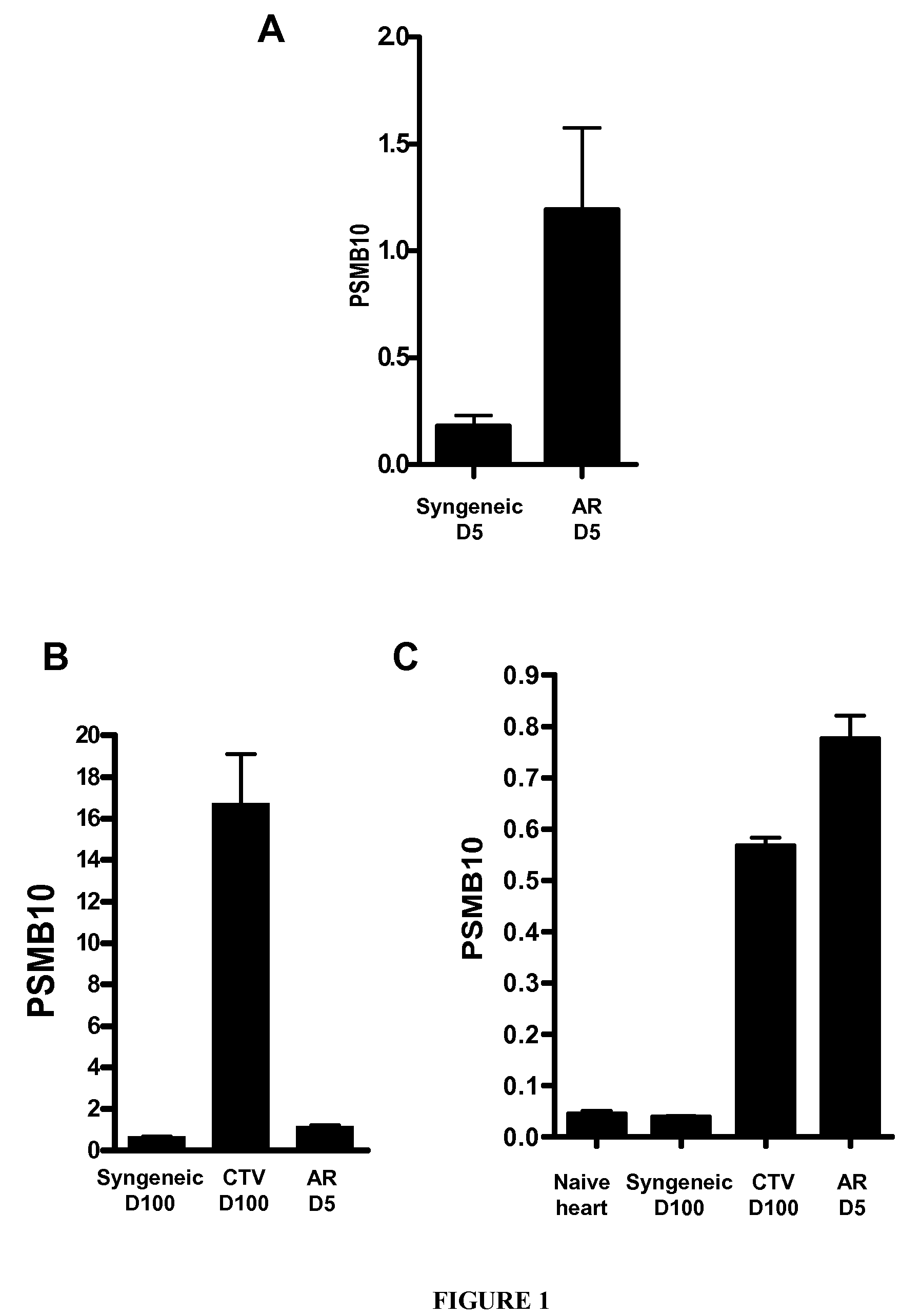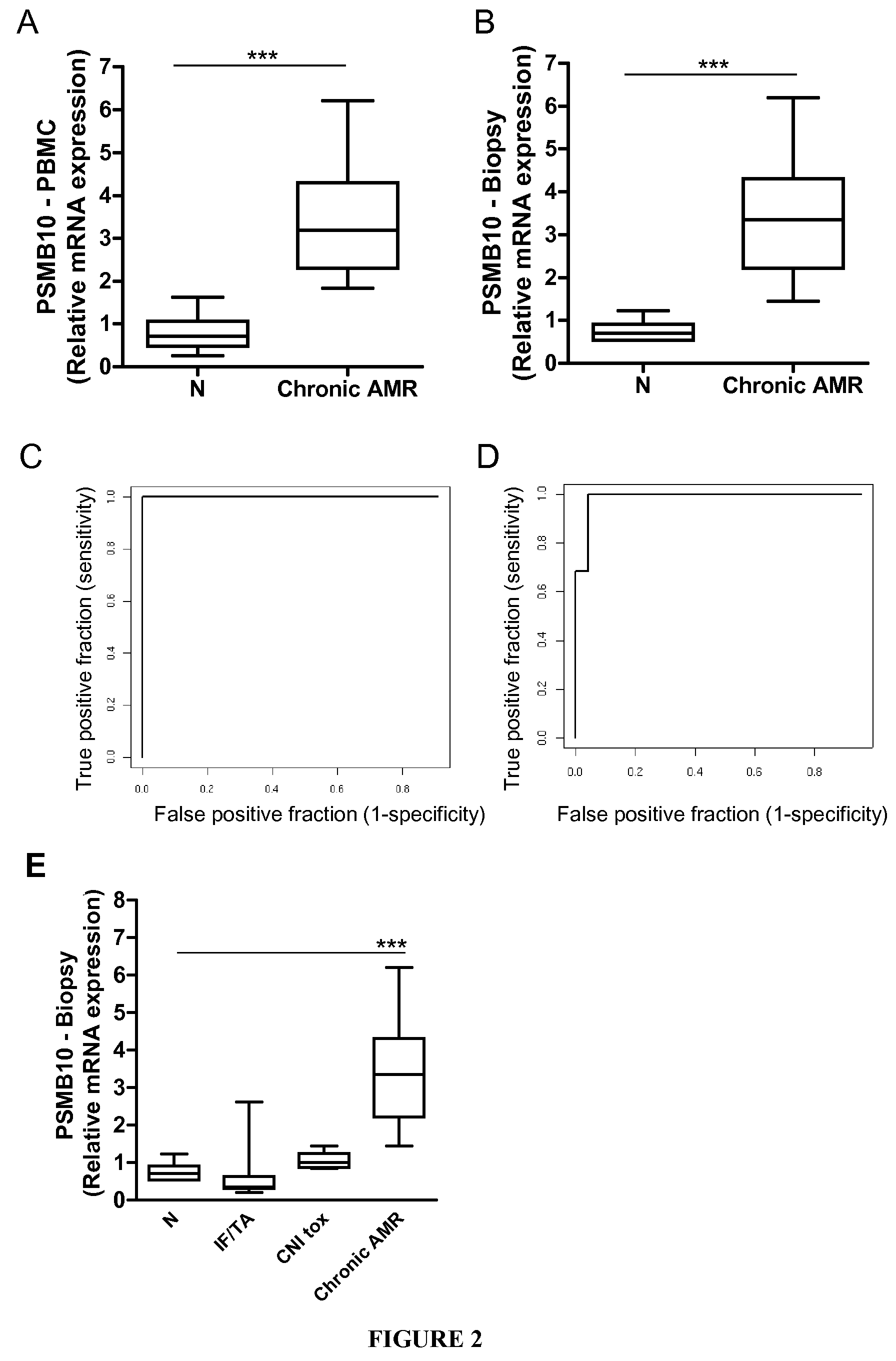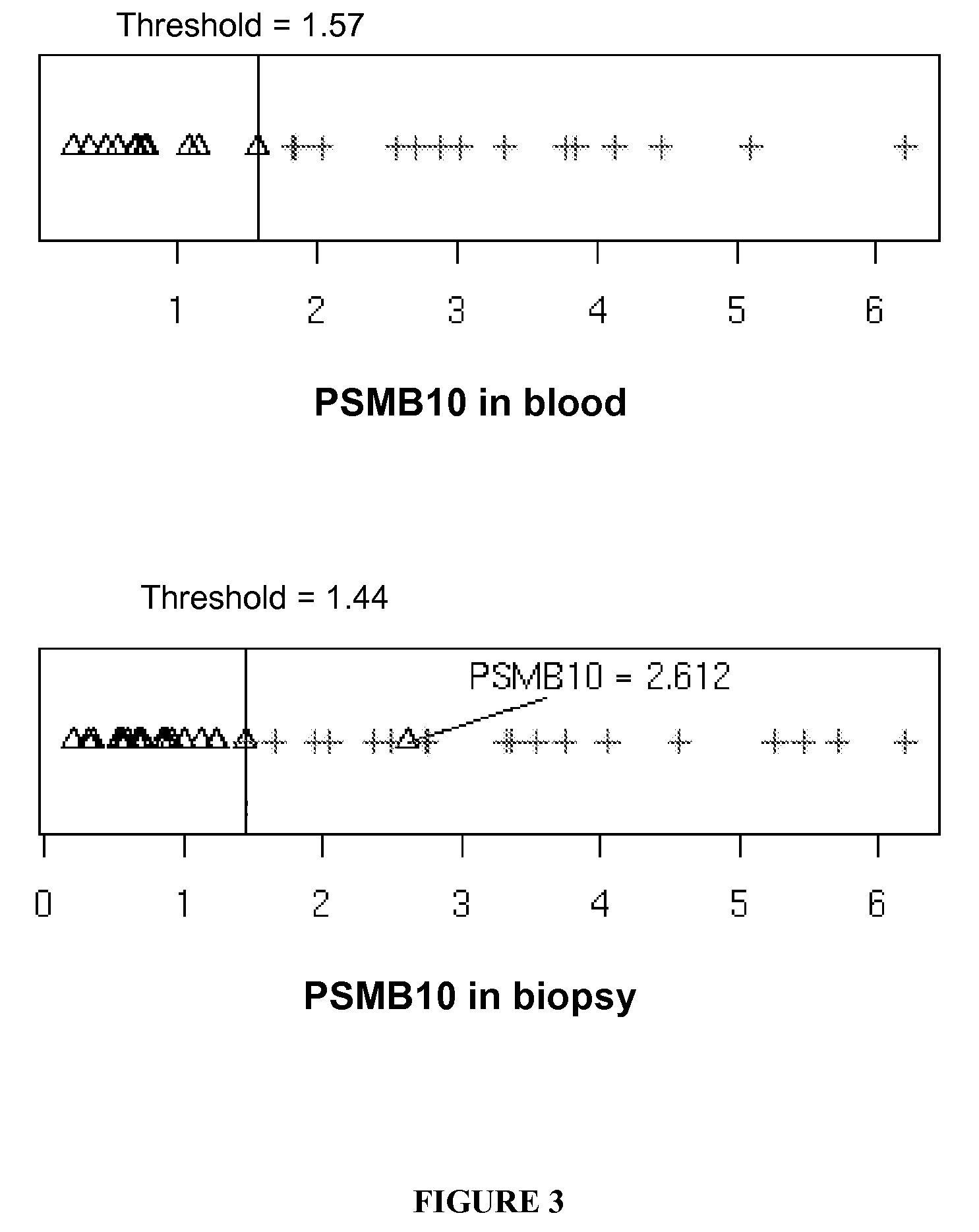Psmb10: a diagnosis marker and therapeutic target of chronic rejection
a technology of psmb10 and chronic rejection, which is applied in the direction of biocide, peptide/protein ingredients, and nucleotide libraries, etc., can solve the problems of only being poorly influenced by currently used immunosuppressors, graft loss, and increasing the life of transplanted organs, so as to inhibit chymotrypsin-like activity
- Summary
- Abstract
- Description
- Claims
- Application Information
AI Technical Summary
Benefits of technology
Problems solved by technology
Method used
Image
Examples
example 1
Analysis of Rat Kidney and Heart Graft Models
1.1. Materials and Methods
[0108]Rodent Transplant Models
[0109]Surgical Procedures, Treatments and Experimental Groups
[0110]Inbred male adult rats (200-250 g) of the LEW.1A (RT1a) and LEW.1W (RT1u) congenic strains were purchased from Janvier (Le Genest-Saint-Isle, France) and maintained in an animal facility under standard conditions according to the European and Institutional Guidelines.
[0111]Kidney transplantation: The model used was that of kidney allotransplantation from LEW.1W donors to MHC-mismatched LEW.1A recipients. Kidney transplantations were performed aseptically and a binephrectomy was performed 7 days after transplantation as previously described (3). Rejection, indicated by the death of the binephrectomized rat, was confirmed by histology. Blood urea and creatinine and urine protein: creatinine ratios were measured throughout the post-transplant period. Blood urea <8 mmol / L and blood creatinine <40 mmol / L were considered as...
example 2
Analysis of Kidney Grafted Human Patients
2.1. Materials and Methods
[0132]PSMB10 mRNA was analysed in 42 biopsies classified according to the updated Banff classification criteria as displaying normal histology (N; n=7), lesions of interstitial fibrosis and tubular atrophy of unknown etiology (IF / TA; n=9), lesions of calcineurin inhibitor toxicity (CNI tox; n=7), or Chronic antibody-mediated rejection (AMR; defined by the diagnostic triad of circulating anti-HLA antibody associated with transplant glomerulopathy and deposition of the complement split product C4d in graft biopsies (n=19).
[0133]Human kidney transplant biopsies were taken with a 16 or 18-gauge needle and stored either in RNAlater (QIAGEN, Courtaboeuf, France) or embedded in Tissue Tek (Miles, Elkhart, Ind., USA), snap frozen in liquid nitrogen and stored at −80° C. RNA extraction from all biopsies was performed using the QIAgen RNA microextraction kit (QIAGEN) with on-column DNase treatment according to the manufacturer...
PUM
| Property | Measurement | Unit |
|---|---|---|
| threshold | aaaaa | aaaaa |
| core structure | aaaaa | aaaaa |
| concentration | aaaaa | aaaaa |
Abstract
Description
Claims
Application Information
 Login to View More
Login to View More - R&D Engineer
- R&D Manager
- IP Professional
- Industry Leading Data Capabilities
- Powerful AI technology
- Patent DNA Extraction
Browse by: Latest US Patents, China's latest patents, Technical Efficacy Thesaurus, Application Domain, Technology Topic, Popular Technical Reports.
© 2024 PatSnap. All rights reserved.Legal|Privacy policy|Modern Slavery Act Transparency Statement|Sitemap|About US| Contact US: help@patsnap.com










